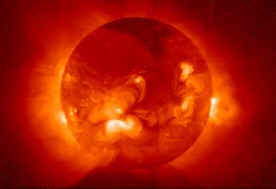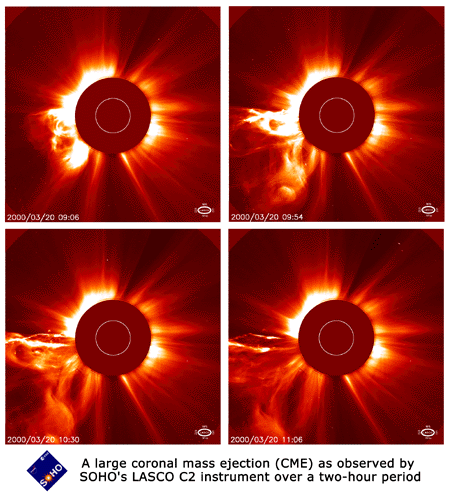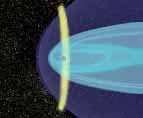
We know that the solar wind is the power source for auroras. It has also been known for a long time that there is a connection between activity on the Sun and auroral activity on the earth. The following graph shows how historically, measurements have suggested sunspots and auroras might be related. |
|||||

|
Bigger and Brighter |
||||
| These types of solar activity include coronal mass ejections (CME's) like the one pictured here, and sudden solar flares. In these events, parts of the Sun's outer atmosphere practically explode, producing huge bursts of solar wind packed with as many sub-atomic particles as a mountain! |
|
||||

|
Above: A coronal mass ejection (CME) bursts from the Sun at the location of 8 o'clock. The dark disk on the SOHO spacecraft masks out the light from the solar disk. The small white circle shows the actual size of the solar disk.
Right: Flare on the Sun's surface, imaged by the TRACE satellite. Flares are very sudden, high-energy events, which eject large quantities of mass in a matter of a few hours. |
||||
|
It's a Blast
|
|||||
©1999-2001 Regents of the University of California This page was last updated |
|||||








